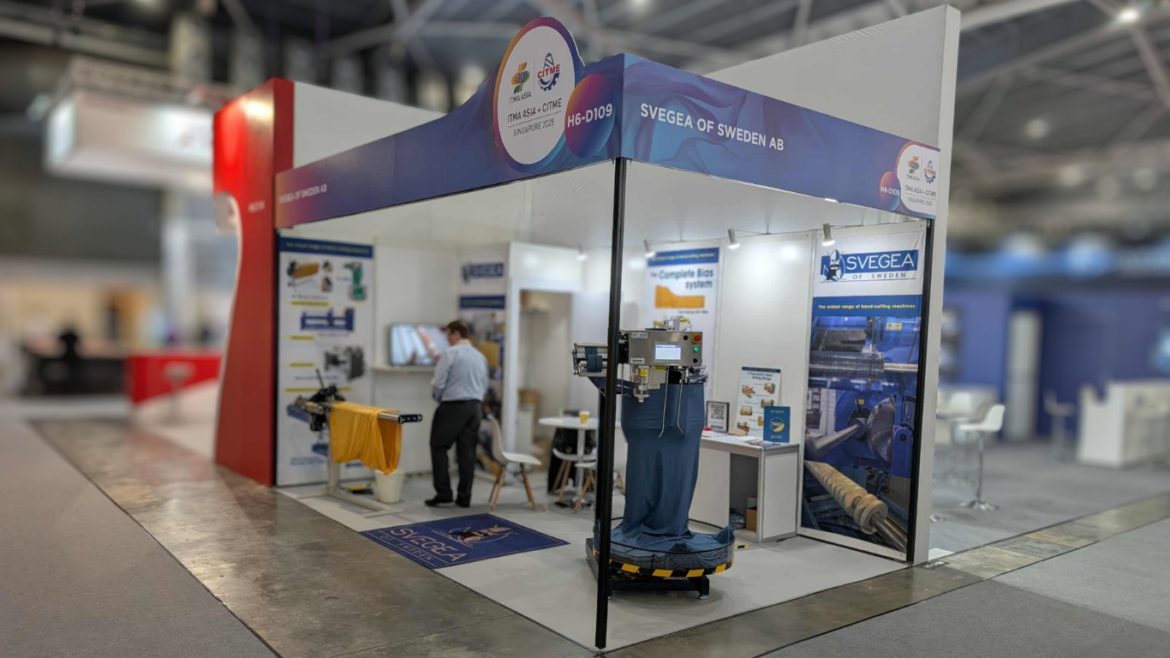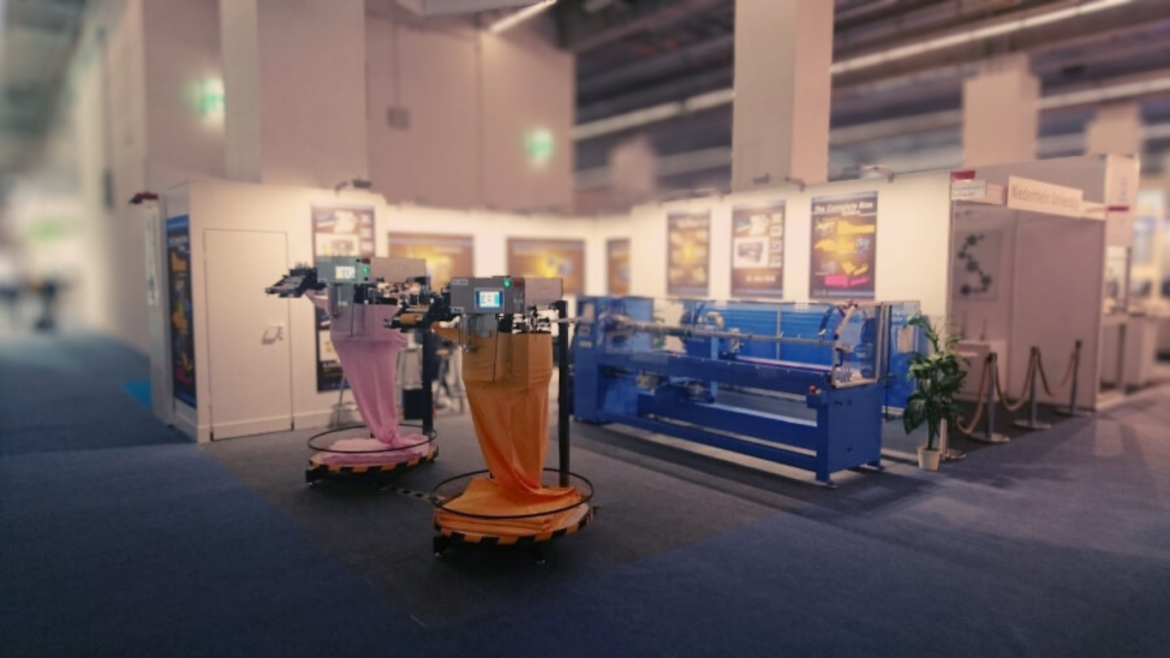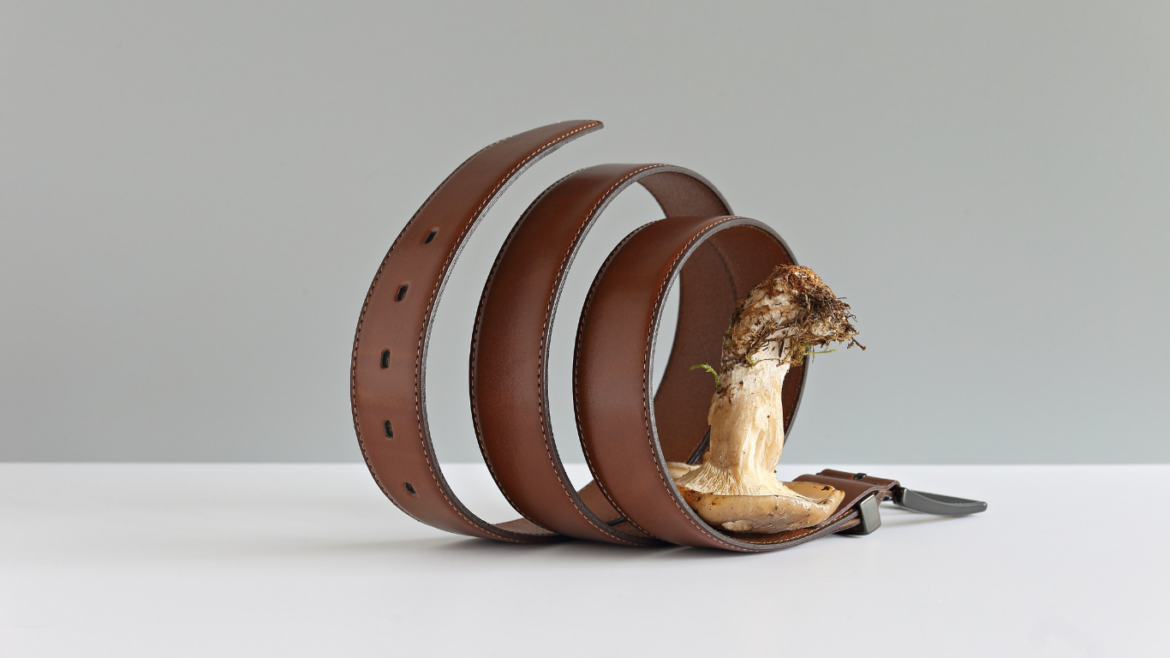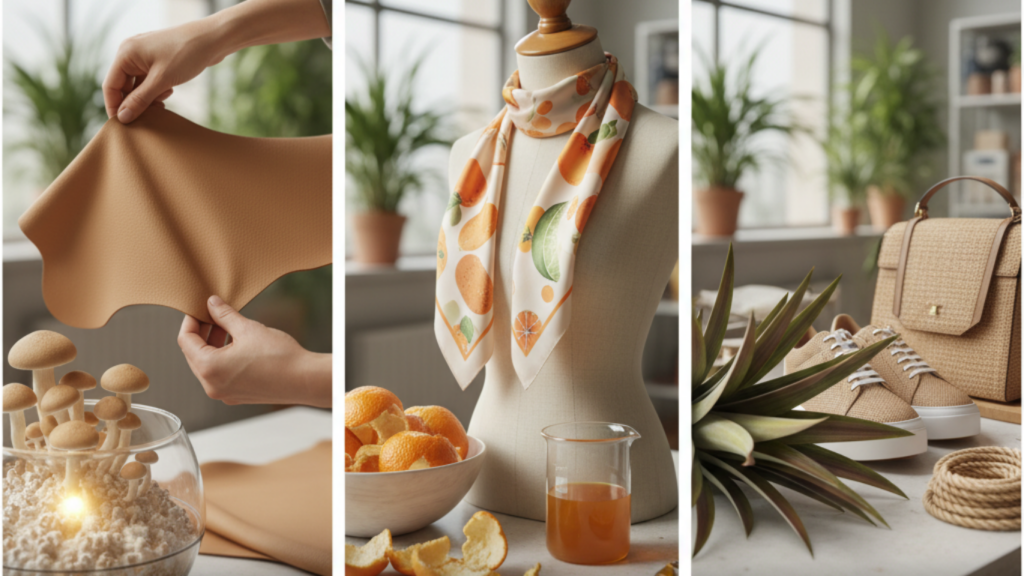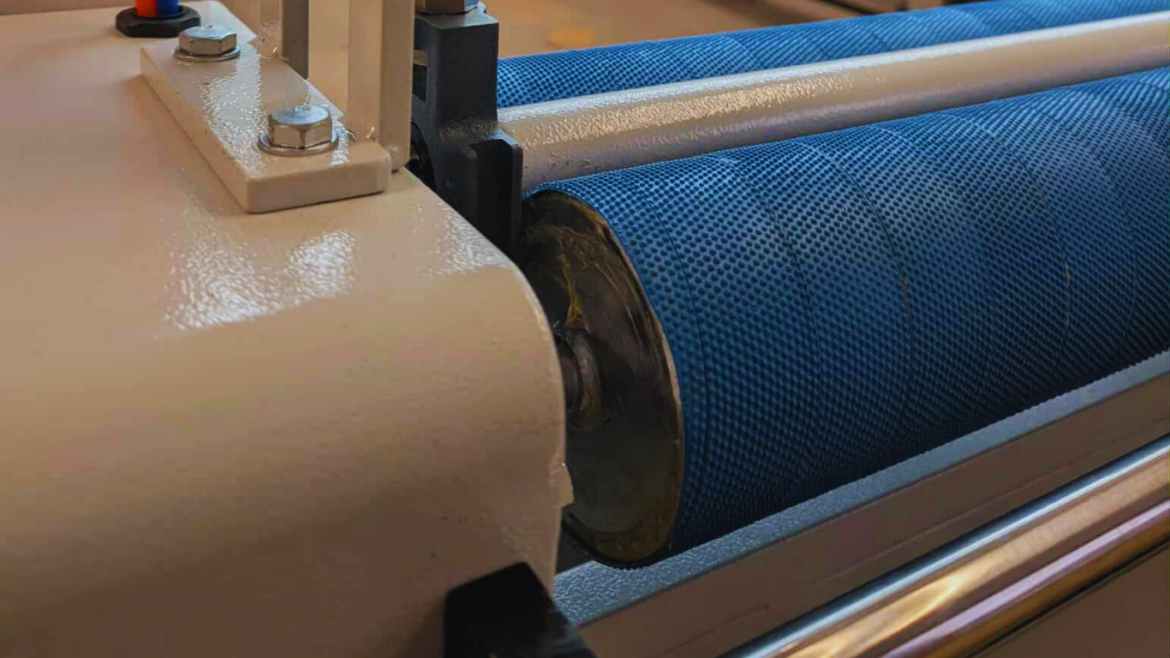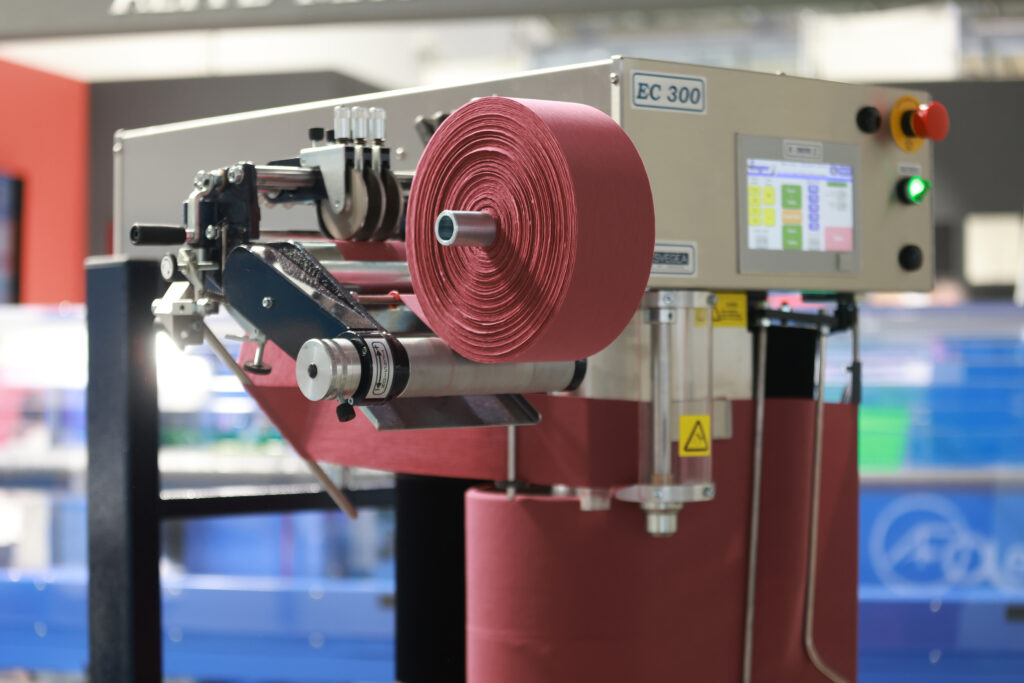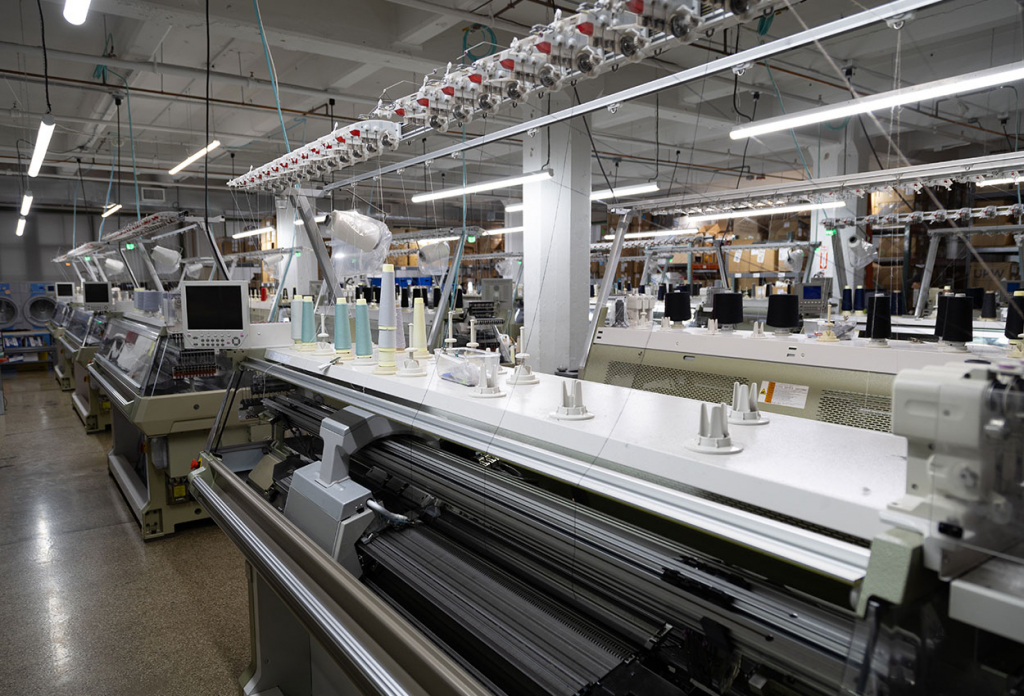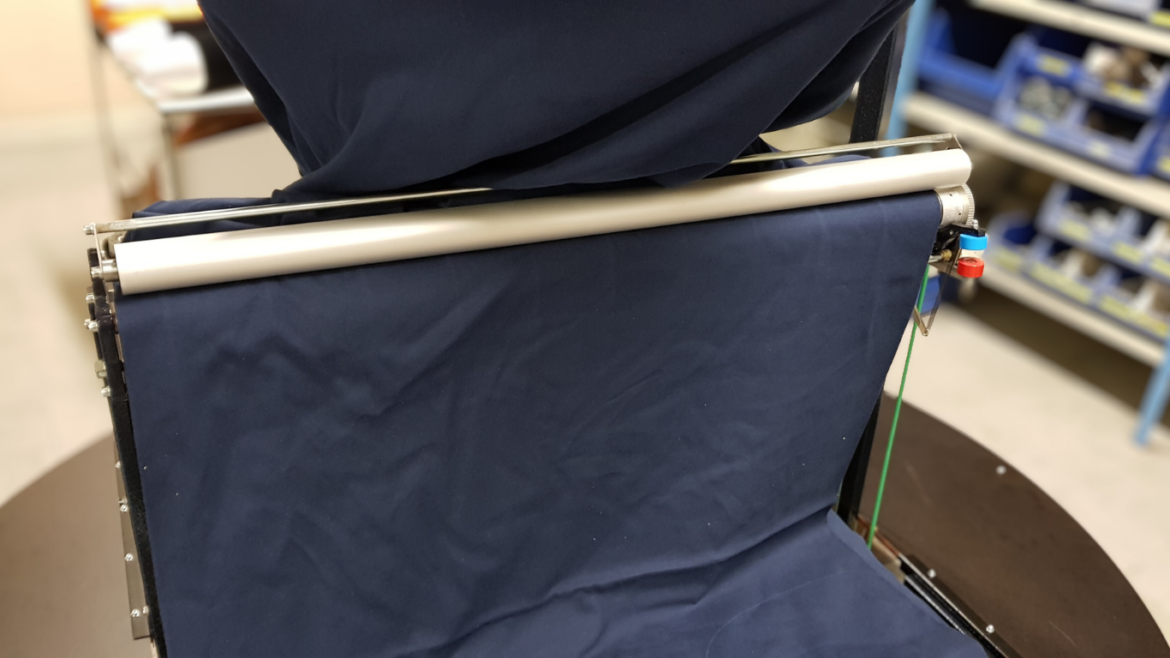The fashion world is entering a bold new era. As we approach 2026, designers, manufacturers, and consumers are embracing a dynamic blend of innovation, sustainability, and self-expression. From runway statements to textile breakthroughs, fashion trends for 2026 are redefining what it means to dress with purpose and personality.
Sustainability Takes Center Stage
One of the most dominant fashion trends in 2026 is sustainability. Eco-conscious design is no longer a niche — it’s the industry standard. Brands are shifting toward biodegradable fabrics, recycled fibers, and waterless dyeing techniques. According to the Ellen MacArthur Foundation, circular fashion models are gaining traction, encouraging reuse and regeneration across the supply chain.
This shift is also influencing textile production. Manufacturers are investing in machinery that minimizes waste and maximizes efficiency. For example, bias cutting machines enable precise fabric utilization, reducing offcuts and improving yield. These innovations support both environmental goals and economic performance.
Texture and Tactility: Feel Is the New Look
In 2026, fashion is all about how it feels. Designers are exploring tactile fabrics that evoke emotion and movement. Expect to see:
- Crinkled cottons and crushed velvets
- Oversized knits and layered tulle
- Liquid silks and structured neoprene
These textures demand precision in cutting and handling, especially in high-volume production. Advanced textile machinery plays a crucial role here. Advanced textile machinery offers the accuracy needed to handle delicate and complex materials without compromising quality.
Color Stories That Speak Louder
Color is becoming a language of its own. The 2026 palette includes earthy neutrals, hyper-synthetic brights, and gradient dye effects. Designers are using color to tell stories — from calm and grounded to bold and rebellious.
Pantone’s trend forecast highlights the emotional power of color in shaping consumer choices. This means manufacturers must be ready to work with diverse dye techniques and ensure consistency across batches — a challenge that modern machinery is helping solve.
Tech-Infused Fashion: Smart Meets Stylish
Technology is no longer behind the scenes. It’s woven into the very fabric of fashion. In 2026, we’re seeing garments with:
- Temperature-regulating fibers
- Embedded sensors for health tracking
- Responsive materials that change with movement or light
This evolution requires collaboration between fashion designers and textile engineers. It also demands equipment capable of handling new materials and production methods. Innovative textile machines are designed to adapt to these changes, offering flexibility and precision for cutting-edge textiles.
Inclusive Design and Adaptive Clothing
Inclusivity is a core value in fashion trends 2026. Brands are expanding size ranges, designing for diverse body types, and creating adaptive clothing for people with disabilities. Features include:
- Magnetic closures and easy-access openings
- Adjustable fits and sensory-friendly fabrics
- Modular garments that evolve with the wearer
This movement is not just ethical — it’s practical. As noted by the World Health Organization, over one billion people live with some form of disability. Fashion must serve them too.
Manufacturers are responding with smarter production lines and customizable cutting solutions. Svegea’s machines, known for their adaptability and precision, are helping garment producers meet these inclusive design goals efficiently.
Modular Fashion: One Garment, Many Lives
Modular design is gaining momentum. Consumers want clothing that adapts to different occasions, climates, and moods. Think detachable sleeves, reversible panels, and garments that transform from casual to formal.
This trend supports sustainability by reducing the need for multiple items. It also challenges manufacturers to rethink construction and cutting techniques. Bias cutting, in particular, allows for fluid draping and flexible design — essential for modular fashion.
Bold and Inclusive
Fashion trends for 2026 are bold, inclusive, and deeply connected to technology and sustainability. For garment and textile manufacturers, staying ahead means investing in tools that support these shifts — from eco-friendly materials to precision cutting equipment.
If you’re ready to upgrade your production capabilities and align with the future of fashion, reach out to Håkan Steene at h.steene@svegea.se for a personalized demo of Svegea’s cutting-edge machinery.
The ITMA ASIA + CITME exhibition in Singapore wasn’t just another industry event—it was a heartbeat moment for the textile world. For us at Svegea of Sweden, it was a chance to stand shoulder-to-shoulder with visionaries, innovators, and changemakers who believe that textile manufacturing can—and must—be a force for good
With over 840 exhibitors and thousands of passionate attendees, the energy was electric. The conversations weren’t just about machines; they were about meaning. About how we, as a global community, can drive sustainability, embrace digital transformation, and build a supply chain that respects both people and planet.
At our booth, we weren’t just presenting technology—we were planting seeds for a better future.
Empowering Asia’s Green Transition
Singapore was the perfect stage for a pivotal shift. By bringing Swedish innovation closer to the dynamic markets of South and Southeast Asia, we’re helping manufacturers leap forward—not just in productivity, but in purpose.
We’re not here to sell machines. We’re here to build partnerships. To guide manufacturers through the maze of global regulations, ethical standards, and environmental goals. The conversations I had were rich with urgency and optimism—focused on resource efficiency, circularity, and renewable integration. Svegea’s solutions aren’t just engineered for performance; they’re designed to empower transformation.
Global Connection, Shared Values
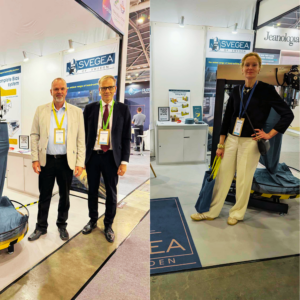 One of the most inspiring moments was welcoming Anders Sjoberg, Swedish Ambassador to Singapore, to our booth. His presence was more than symbolic—it was a powerful endorsement of Sweden’s leadership in ethical innovation and sustainable industry.
One of the most inspiring moments was welcoming Anders Sjoberg, Swedish Ambassador to Singapore, to our booth. His presence was more than symbolic—it was a powerful endorsement of Sweden’s leadership in ethical innovation and sustainable industry.
We were also honored to host Therese Premler-Andersson, General Secretary of TMAS. Her visit reminded us that collaboration is the cornerstone of progress. No single company can solve the textile industry’s challenges alone. But together—through shared knowledge, mutual respect, and bold action—we can reshape the future of fashion and manufacturing.
Beyond the Sale: A Promise to the Future
As we dismantled our booth, what lingered wasn’t the hum of machinery—it was the spirit of possibility. ITMA ASIA + CITME reaffirmed our belief that innovation and ethics must walk hand in hand. The focus wasn’t on quantity—it was on quality, impact, and intention.
These four days have galvanized our mission. We will continue to develop durable, high-performance technologies that enable manufacturers to produce exceptional garments while protecting our planet. The journey doesn’t end here—it begins anew, with deeper partnerships and bolder goals.
Tack för stödet (Thank you for the support). If you’re ready to elevate your sustainable production, I invite you to connect with our team leader, Håkan Steene, for a hands-on demonstration of the EC COLLARETTE 200 and EC 50: h.steene@svegea.se.
Let’s build the future—together.
In today’s fast-paced textile industry, precision, speed, and sustainability are no longer optional — they’re essential. That’s why manufacturers around the world are turning to Swedish textile cutting machinery — specifically Svegea, a company that’s been redefining automated cutting solutions since 1952.
Svegea’s Swedish-engineered solutions help manufacturers by focusing on automation, sustainability, and user-friendly design to improve efficiency, reduce waste, and adapt to market demands. Their machines support the creation of smarter, more connected factories through integration with Industry 4.0 principles, making them ideal partners for reshoring efforts and sustainable production goals.
Automation: The Foundation of Competitive Manufacturing
High-Speed Precision Cutting
Svegea’s textile cutting machinery from Sweden is engineered for high-speed, precise cutting, which helps produce consistent quality and faster production times. Every machine is designed to maintain exacting standards even at maximum operational speeds, ensuring that manufacturers can scale production without sacrificing quality.
- EC-450XF Collarette Cutting System: Awarded at Texprocess 2023 for its innovation and sustainability, this fully automatic system delivers high-speed, low-waste performance with precision that’s become the industry benchmark.
- Euro-Collarette Fully Automatic Series: These models feature the intuitive E Drive 2 panel and two-step cutting for multiple bands — ideal for high-volume operations requiring consistent output.
Automated Processes That Reduce Labor Dependency
Svegea integrates automatic tube sewing units for creating sewn tubes in rolled or flat-folded forms, reducing the need for operator assistance and minimizing human error.
- TSU 200 A/AF Tube Sewing Unit: Minimal operator input, maximum efficiency. This system exemplifies how automation enables manufacturers to redirect skilled labor to higher-value tasks.
- Bias Cutter / Winder 200: Smooth unwinding and rewinding into single ply rolls with minimal manual intervention.
- Bias Cutter CMB 1800: Versatile and adaptable across fabric types, streamlining the entire bias binding process.
Supporting Reshoring with Smart Automation
Automation facilitates reshoring operations by making local manufacturing more competitive and efficient. Sweden’s textile cutting machinery industry leads this transformation, offering manufacturers the tools they need to bring production home without sacrificing cost-effectiveness.
Sustainability: Engineering for a Better Future
Precision That Reduces Waste
Precision cutting and automation help maximize fabric usage, minimizing material waste. Svegea’s machines are engineered to optimize every centimeter of fabric, contributing directly to both profitability and environmental responsibility.
- Strip Cutter CMS 1800A2: High-speed cutting for bias tape, trims, and bindings with advanced nesting algorithms that reduce offcut waste.
- TSO 380 G/GF Tubular Knit Slitter: Reduces waste and improves material yield through intelligent cutting patterns.
Energy-Efficient Engineering
Svegea’s machinery is designed to be energy efficient, lowering consumption and environmental impact. Every system is optimized for minimal power draw without compromising performance, making textile cutting machinery from Sweden a smart choice for manufacturers committed to reducing their carbon footprint.
- RRS-800 Fully Automatic Roll Slitting Machine: Offers motorized knife control and adjustable speed for consistent quality while maintaining low energy consumption throughout extended production runs.
Supporting Circular Economy and Recycled Materials
By improving garment durability and promoting longevity through efficient production, Svegea’s machines contribute to a more circular economy. The advanced technology can support the use of recycled materials in production, accommodating the varied characteristics of reclaimed fabrics without compromising cut quality.
- FIM CMI 210 R / ZR Fabric Inspection Machine: Detects defects and inconsistencies in both virgin and recycled materials before they reach the cutting floor, ensuring quality regardless of source.
User-Friendly Design: Versatility Meets Accessibility
Adaptable Across Material Types
The cutting machines can handle a wide range of materials, from delicate silks to heavy-duty industrial textiles. This versatility makes Swedish textile cutting machinery ideal for manufacturers serving diverse market segments.
- SV/BK Band Knife Series: Precision cutting for everything from delicate silks to heavy-duty fabrics, with easily adjustable settings for quick material transitions.
- Strip Cutter FA 500: Heavy-duty and reliable, perfect for long production cycles with materials ranging from PVC to non-woven fabrics.
Quick Changeovers for Maximum Productivity
User-friendly interfaces and the ability to quickly switch between patterns and materials reduce downtime and enhance productivity. The intuitive E Drive 2 control panel makes complex operations accessible to operators at all skill levels.
- Euro-Collarette Semi-Automatic Series: A semi-automatic option that cuts two bands simultaneously, with widths ranging from 16 to 140 mm — changeable in minutes, not hours.
Customization for Niche Applications
Svegea provides custom-specific machines and units for niche applications like bias cutting, and can adapt to diverse customer preferences. This flexibility ensures that whether you’re producing standard collarettes or specialized technical textiles, there’s a solution engineered specifically for your needs.
- W 2100S Fabric Rewinding Machine: Perfect re-rolls every time, with customizable tension and speed settings for different fabric types.
Industry 4.0 Integration: Building Smarter Factories
Sweden’s textile cutting machinery leads the way in smart manufacturing integration. Designed to connect seamlessly with modern factory management software the Svegea system enables:
- Real-time production monitoring and quality control
- Predictive maintenance scheduling to minimize downtime
- Data-driven optimization of cutting patterns and material usage
- Integration with inventory and supply chain management systems
This connectivity transforms individual machines into components of an intelligent manufacturing ecosystem. The result? Long-term competitiveness in an increasingly digital industry.
The Swedish Advantage: Seven Decades of Innovation
Textile cutting machinery from Sweden represents more than a geographic label — it’s a commitment to quality, innovation, and sustainability. Svegea embodies the best of Swedish engineering: meticulous attention to detail, long-term reliability, and environmental responsibility.
Svegea has been serving global textile manufacturers since 1952, continuously innovating to meet the evolving demands of modern production. This heritage of excellence makes Swedish textile cutting machinery a global benchmark for quality, sustainability, and technological advancement.
Ready to Transform Your Production Line?
Experience how premium Swedish textile cutting machinery can revolutionize your operations. Whether you’re looking to reshore production, reduce waste, improve efficiency, or build an Industry 4.0-ready factory, Svegea has the solutions you need.
Explore Svegea’s full range of automated textile solutions at svegea.se. For a personalized product demo and consultation, contact Håkan Steene at h.steene@svegea.se.
Let’s build the future of sustainable, efficient textile manufacturing — together.
The fashion revolution isn’t just a trend—it’s a full-blown transformation. It’s bold, it’s beautiful, and it’s reshaping everything from haute couture to humble factory floors. Circular fashion, once a niche concept whispered among eco-warriors, is now the heartbeat of the industry. And guess what? It’s not just designers and influencers leading the charge. Garment and textile manufacturers are stepping into the spotlight, armed with smart machines and sustainable strategies.
Circular Fashion: More Than Just a Buzzword
Let’s be real. Fashion has always been about reinvention. But the fashion revolution is different. It’s not about chasing the next look; it’s about changing the way we make, wear, and reuse clothing. Circular fashion means designing garments that last longer, can be repaired, recycled, or repurposed, and don’t end up as landfill clutter.
Consumers are loving it. From thrifted treasures to biodegradable sneakers, they’re choosing pieces that tell a story—and respect the planet. But behind every conscious choice is a manufacturer making it possible.
The Factory Floor Joins the Revolution
Here’s where things get exciting. The fashion revolution isn’t just happening on runways or in retail. It’s happening in factories, where smart technology is turning sustainability into profitability.
Modern fabric inspection systems now detect flaws before cutting begins, reducing waste and improving quality. Automated cutting machines use AI to map out the most efficient layouts, saving material and time. These innovations aren’t just cool—they’re crucial.
According to the Stockholm Resilience Centre, circular fashion models are key to reducing environmental impact and building resilient supply chains. And manufacturers who embrace these models are seeing real results.
Fashion Revolution = ROI Revolution
Let’s talk numbers. The fashion revolution isn’t just good for the Earth—it’s good for business.
By optimizing material use with smart inspection and cutting tech, manufacturers reduce fabric waste, lower production costs, and increase output. That means better margins and faster turnaround. Plus, sustainable practices attract eco-conscious brands and consumers, boosting demand and loyalty.
A study published by MDPI found that circular economy strategies like reuse, recycling, and reduction are not only environmentally beneficial—they’re economically viable. In other words, sustainability sells.
From Catwalk to Cutting Table
Designers may sketch the vision, but manufacturers bring it to life. The fashion revolution depends on this partnership.
Imagine a designer creating a zero-waste collection. To make it real, the factory needs machines that can handle unconventional fabrics, cut with precision, and minimize leftovers. That’s where innovation meets execution.
Why Manufacturers Should Care
Still wondering if the fashion revolution is worth the investment? Let’s break it down:
- Relevance: Brands are demanding sustainable production. If you can’t deliver, they’ll find someone who can.
- Efficiency: Smart machines reduce waste, save time, and improve consistency.
- Compliance: Regulations around textile waste are tightening. Circular practices help you stay compliant.
- Growth: Eco-conscious consumers are driving demand. Be ready to scale sustainably.
This isn’t just a movement—it’s a market shift. And manufacturers who adapt will thrive.
The Future Is Circular—and Smart
Circular fashion is here to stay. And the fashion revolution is only getting stronger. From recycled fibers to AI-powered cutting tables, the tools are ready. The demand is real. And the opportunity is massive.
If you’re a garment or textile manufacturer, now is the time to act. Don’t just watch the revolution—join it.
“The fashion revolution is not just about what we wear—it’s about how we make it. At Svegea, we’re committed to helping garment and textile manufacturers stay ahead by innovating our machinery to support circular fashion models. Sustainability and profitability can go hand in hand.” — Hakan Steene, Managing Director, Svegea of Sweden
Contact Hakan Steene at h.steene@svegea.se to explore Svegea’s innovative textile machinery. These sustainable solutions are designed to help your company stay relevant, reduce waste, and boost ROI in the age of the fashion revolution.
Fashion is changing—and fast. Today, being eco-friendly isn’t just a trend. It’s a smart move. People care more about the planet, and they want clothes made responsibly. That’s where fabric innovation comes in. It’s helping fashion brands create better materials and use smarter machines to make clothes in cleaner ways.
Let’s explore how new fabrics and modern machines are working together to build a more sustainable fashion industry.
New Materials, New Possibilities
For years, most clothes were made from cotton or polyester. These materials use a lot of water, chemicals, and energy. But now, designers are using things like fruit peels, mushrooms, and even carbon from the air to make fabric.
Here are a few examples:
- Mylo: A soft, leather-like material made from mushroom roots. It feels like real leather but is biodegradable and doesn’t harm animals.
- Orange Fiber: Made from leftover citrus peels. It’s silky and smooth, perfect for dresses and scarves.
- Piñatex: Created from pineapple leaves. It’s strong and flexible, often used in shoes and bags.
These new fabrics are stylish, durable, and better for the environment. They break down naturally and don’t need as many resources to produce. People want to know where their clothes come from, and brands are responding with cleaner, smarter choices.
Machines That Make It Happen
These cool new fabrics wouldn’t exist without the right machines. Today’s textile machines are smarter and greener than ever. They use less water, less energy, and fewer chemicals.
Let’s break down what these machines do:
- Dyeing machines with closed-loop systems: These machines clean and reuse water during the dyeing process. That means less pollution and lower water bills.
- Spinning machines with smart sensors: These sensors adjust the yarn tension automatically. This helps reduce waste and keeps the fabric smooth and strong.
- Aluminum extrusion frames: These lightweight frames make machines faster and easier to maintain. They also use less energy during production.
This is where fabric innovation meets smart engineering. By using better materials and better machines, factories can make high-quality clothes while protecting the planet.
Why Going Green Is Good for Business
Being sustainable isn’t just good for the Earth—it’s good for business too. Brands that use fabric innovation often save money and attract more customers.
Here’s how:
- Lower energy costs: Machines that use less electricity help reduce monthly bills.
- Fewer labor expenses: Automated systems do more work with fewer people, saving time and money.
- Longer-lasting products: Strong, recyclable fabrics mean fewer returns and happier customers.
Also, governments are starting to set stricter rules about waste and pollution. Companies that switch to cleaner methods now will be ready for the future—and avoid fines or delays.
Recycling Clothes: The Circular Fashion Idea
One of the coolest parts of fabric innovation is how it helps with recycling. Instead of throwing old clothes away, companies can now turn them into new fabric.
Here are some exciting developments:
- Fiber-to-fiber recycling: This process breaks down old clothes and spins them into fresh yarn. It keeps materials in use and out of landfills.
- Carbon capture polyester: Some companies are turning carbon dioxide from factory smoke into polyester fabric. It’s a smart way to clean the air and make clothes.
- Lab-grown cotton: Scientists are growing cotton in labs without using farmland or pesticides. It’s clean, safe, and doesn’t harm the soil.
These ideas are already being tested in places like Europe and Asia. They help reduce trash, save resources, and even create new jobs.
Working Together to Make It Work
To make all this happen, people across the fashion world need to team up. Garment manufacturers, fabric developers, and clothing brands must share ideas and work together.
Here’s what that looks like:
- Engineers designing new machines: These machines can handle unusual fabrics like mushroom leather or pineapple fiber.
- Designers experimenting with new styles: They’re testing how these new materials feel, look, and move.
- Factory owners rethinking production: They’re changing how they plan, cut, and ship products to reduce waste and save money.
This teamwork is what makes fabric innovation so powerful. It’s not just about one product—it’s about changing the whole system.
Fashion Innovation is Growing Every Day
If you’re a garment maker, designer, or business owner, this is your moment. The tools are ready. The materials are here. And the demand for sustainable fashion is growing every day.
“At Svegea, we believe fabric innovation is the heartbeat of modern fashion. That’s why we’re constantly evolving our machinery—making it smarter, cleaner, and more adaptable—so garment and textile manufacturers can stay ahead in a fast-changing industry.” — Hakan Steene, Managing Director of Svegea of Sweden
Reach out to Hakan Steene at h.steene@svegea.se to explore how Svegea’s textile machinery can help you lead the way. Whether you’re upgrading your factory or starting fresh, Svegea offers smart solutions that fit your goals—and your budget.
Factories face three hard truths: fabric costs keep rising, buyers want faster delivery, and sustainability matters to customers and regulators. Improving garment manufacturing efficiency puts these pressures into practical order. Get this right and you cut costs, gain speed, and reduce waste.
Where waste really bites
Small mistakes cost big. A mis-inspected roll can mean meters of unusable fabric. Manual checks slow lines and create rework. Labor shortages and rising wages exacerbate every inefficiency. That is why garment manufacturing efficiency must be a daily focus, not a quarterly idea.
Trends pushing factories to change
Across the industry, manufacturers are adopting digital tools. Marker optimization reduces raw material use. Real-time dashboards track defects. Automation speeds repetitive tasks while freeing people to solve problems. Together, these moves enhance garment manufacturing efficiency and make factories more scalable.
Tools that move the needle
Automation is not a single gadget. It is a set of targeted investments that deliver repeatable gains. Start with quality control. Automated inspection and reliable cutting reduce rework and scraps. Next, connect systems so design files, markers, and production data flow without manual transfers. That reduces setup time and avoids costly mistakes. Focused improvements add up fast when your goal is garment manufacturing efficiency.
Fabric inspection: the unsung hero
A lot of manufacturers undervalue inspection. A good inspection line catches faults before cutting, preventing defects that would otherwise propagate through sewing and finishing. The CMI 210 ZR fabric inspection machine is built for that exact role. It handles rolls up to 2100 mm, runs roll-to-roll or roll-to-flat, and offers variable electronically controlled speed, photocell edge alignment, and electronic tension adjustments. That level of control reduces hidden waste at the source.
Collarette cutting: precision where it matters
Certain parts of a garment reveal flaws instantly. Collarette and binding components need uniform width and clean edges. Svegea’s collarette cutting machines cover semi-automatic and fully automatic models. They handle tubular knitted fabric with adjustable widths from about 16 to 140 mm. The standard setup cuts two bands at once, and knife units can be added for more. For high-volume runs, the automatic systems remove variability and keep quality consistent.
What success looks like in real numbers
When factories prioritize process control and the right equipment, they see measurable results. Expect fabric waste to drop, lead times to shorten, and quality rejects to decline. These improvements drive margin expansion and help with sustainability reporting. In short, garment manufacturing efficiency converts directly into competitive advantage.
A simple plan to get started
Start methodically. First, audit the cutting and inspection rooms to find where most scrap and rework come from. Next, pilot one change. Try a fabric inspection line or a semi-automatic collarette cutter on a single product style or order run. Train the operators, collect data, and tweak. Finally, scale what proves out. This stepwise approach helps you manage cost and avoid disruption.
The business case
The math usually lands in your favor. Less waste means lower material spend. Tighter quality control means fewer returns and less rework. Faster setup times mean you can run smaller batches and respond to demand. That combination raises throughput without endless headcount increases. If you want to improve garment manufacturing efficiency, this is the route most executives choose.
Focusing on the right tools
Efficiency is not glamorous, but it is decisive. Focus on the right mix of inspection, precise cutting, and connected workflows, and you will see both cost and time benefits. Machines that support those goals, whether a robust inspection unit like the CMI 210 ZR or a scalable Euro-Collarette cutter, are tools that turn good intentions into measurable results.
For a demo or to discuss how this fits your production, contact Håkan Steene at h.steene@svegea.se or visit the Svegea product pages.
The textile industry has always moved fast. But today, speed alone isn’t enough. With fashion brands demanding rapid turnarounds and consumers expecting personalized, eco-conscious products, manufacturers face a new kind of pressure—one that demands agility, intelligence, and sustainability.
This is where sustainable textile machinery enters the picture. As the backbone of Industry 4.0, these advanced systems are reshaping how garments and textiles are produced. From automated cutting to digitally integrated workflows, the right machinery doesn’t just improve efficiency—it transforms entire operations.
Why Smart Automation Is No Longer Optional
Traditional production methods struggle to meet the demands of today’s market. Seasonal collections have given way to micro-drops, and global buyers expect consistency across every batch. Meanwhile, rising labor costs and environmental regulations are pushing manufacturers to rethink their processes.
Smart automation addresses these challenges head-on. Machines now deliver faster throughput, precise cutting, and scalable production—all while minimizing waste. For textile manufacturers, this isn’t just about saving time or money. It’s about staying competitive in a global market that rewards innovation and sustainability.
Cutting Technology That Drives Efficiency
While robotics and AI often steal the spotlight, cutting and trimming remain some of the most critical—and overlooked—stages in textile production. Components like collarettes, bands, and trims may seem minor, but they directly impact garment quality, fit, and durability.
Svegea of Sweden has long recognized this. Our sustainable textile machinery solutions, including the Automatic Collarette Cutter and Band Cutting Machines, are engineered for precision and reliability. These systems ensure every piece is cut to exact specifications, whether it’s the first or the ten-thousandth. Integrated into smart production lines, they enable seamless data flow and real-time adjustments.
Proven Impact on the Factory Floor
Consider a factory producing thousands of garments daily. Without automation, band cutting becomes a bottleneck—dependent on manual precision that varies from worker to worker. With Svegea’s cutting technology, that same factory sees:
- A 25–30% increase in throughput
- Significant reduction in fabric waste
- Consistent quality that meets international standards
These gains translate into faster delivery times, fewer returns, and stronger relationships with global buyers. More importantly, they demonstrate how sustainable textile machinery can deliver measurable ROI.
Building the Smart Factory of Tomorrow
Automated cutting is just one piece of the smart factory puzzle. When paired with IoT-enabled equipment, ERP systems, and AI-driven planning tools, it becomes part of a fully connected ecosystem. In this setup, machines communicate, data drives decisions, and production adapts instantly to market shifts.
This is the promise of Industry 4.0: a future where textile manufacturers can balance speed, cost, and sustainability without compromise. And it starts with investing in the right machinery.
Commitment to Sustainable Innovation
At Svegea of Sweden, we’re proud to support the evolution of textile manufacturing. Our cutting solutions are designed not only for performance but also for sustainability. By reducing waste, improving accuracy, and integrating seamlessly into smart production lines, our machines help factories meet the demands of modern manufacturing.
If you’re ready to explore how sustainable textile machinery can future-proof your operations, we’re here to help.
📩 Contact Håkan Steene at h.steene@svegea.se for a product demo or more details. Let’s build the future of textiles—together.
The fashion and textile industry is changing fast. More brands are shifting to on-demand textile production to reduce waste and meet customer expectations. Instead of making large batches that may never sell, manufacturers now focus on producing only what’s needed. This approach helps cut costs, save materials, and support sustainability goals.
Sustainability isn’t just a trend—it’s a must. From fabric waste to energy use, every part of the production process matters. And one of the smartest ways to make a difference is through precision.
Why Waste Reduction Matters
Fabric waste is a hidden problem in many factories. Every scrap, wrong cut, or rejected item means:
- Lost money: Fabric is expensive, and waste eats into profits
- Environmental harm: Most textile waste ends up in landfills
- Extra work: Fixing mistakes takes time and energy
When these issues happen often, they add up fast. That’s why reducing waste is good for both the planet and the bottom line.
The Circular Economy in Textiles
The circular economy is all about keeping materials in use and cutting down on waste. In fashion, this means:
- Designing products that last
- Recycling fabrics and fibers
- Using every roll of material wisely
On-demand textile production fits right into this model. By making only what’s needed, factories avoid overproduction and reduce leftover stock. But even before recycling starts, precision machinery helps cut waste at the source.
Precision Technology: Small Changes, Big Impact
Big changes don’t always need big investments. Machines that cut fabric with accuracy, run efficiently, and reduce errors can make a huge difference.
Here’s how precision machinery helps:
- Less fabric waste: Every cut is clean and exact
- Fewer mistakes: Consistent quality means fewer rejects
- Lower energy use: Efficient machines run faster and smarter
- Longer machine life: Durable tools need fewer replacements
These small upgrades support on-demand textile production by making each step more efficient and less wasteful.
Real-World Impact: Knitwear and Trims
Think about a factory making trims for t-shirts. If they use old cutting methods, they might waste 5–10% of their fabric. But with modern precision cutters:
- Every strip is cut perfectly
- Waste drops by several meters per run
- Quality stays high, so there’s less rework
This kind of setup supports on-demand textile production by allowing quick changes and small batch runs without losing efficiency.
Sustainability as a Competitive Edge
Today’s shoppers care about the planet. Brands that show they’re eco-friendly often win more trust and more business. For manufacturers, this means:
- Getting contracts with green-focused brands
- Meeting global rules on waste and emissions
- Standing out in a busy market
Using precision machinery and switching to on-demand textile production helps factories prove they’re serious about sustainability.
Make the Smart Choice Now
Sustainability starts with smart choices. By using precision tools and embracing on-demand textile production, manufacturers can cut waste, save money, and meet modern demands.
Ready to make your production line more efficient and eco-friendly?
📩 Contact Håkan Steene for a product demo at h.steene@svegea.se or visit https://www.svegea.se to learn more.
Image courtesy of Services – Fashinnovation
The fashion industry thrives on change—but in recent years, that change has accelerated into a full-blown revolution. No longer are brands defined by two seasonal collections and predictable production cycles. Today’s consumers demand personalization, limited editions, and lightning-fast turnaround. They expect garments that feel tailor-made, not mass-produced—and they want them now.
For garment and textile manufacturers, this shift isn’t just a trend—it’s a wake-up call. Meeting these demands requires more than creativity; it calls for operational reinvention. From design to delivery, every stage must be faster, smarter, and more adaptable. That’s where automated textile production enters the picture, enabling manufacturers to respond with precision, speed, and scalability.
At the heart of this transformation lies one powerful principle: flexibility.
The Rise of On-Demand Production
If one trend is reshaping the textile landscape, it’s on-demand production. Instead of stockpiling inventory and gambling on what might sell, brands now produce in smaller, agile batches—sometimes even one item at a time.
Why is this happening?
- Personalization sells. Whether it’s a custom sports jersey or a limited-edition streetwear drop, consumers crave uniqueness.
- Sustainability matters. Overproduction is one of fashion’s biggest environmental pitfalls. On-demand production helps reduce waste by making only what’s needed.
- Agility wins. Smaller runs allow brands to test the market, pivot quickly, and scale up with confidence.
In short, mass customization is overtaking mass production. And manufacturers who fail to adapt risk being left behind.
Flexibility on the Factory Floor
On-demand production sounds ideal—but it’s not without challenges. Small-batch runs and rapid turnarounds demand machinery that can:
- Switch between materials and specs with minimal downtime
- Deliver consistent precision from the first piece to the last
- Handle custom orders without compromising efficiency
This is where a robust textile solution becomes essential. Automated textile production systems allow manufacturers to pivot seamlessly between orders while maintaining quality and controlling costs. Flexibility isn’t just a feature—it’s the foundation of future-ready manufacturing.
Real-World Impact: Sportswear & Activewear
Take the booming sportswear market. Teams, clubs, and fans expect customized gear—jerseys with names, leggings in unique colorways, and performance wear tailored to niche needs.
Without flexible cutting equipment, these orders would be slow, error-prone, and costly. But with Svegea’s Automatic Collarette Cutters:
- Factories can switch quickly between team orders with different trims
- Precision cutting ensures every collar and band fits perfectly
- Small-batch customization becomes streamlined and scalable
This isn’t just operational efficiency—it’s a strategic edge.
Flexibility = Future-Proofing
Fashion moves fast. Trends go viral and vanish in weeks. Consumer loyalty shifts with every swipe. But one thing remains constant: the demand for speed, uniqueness, and sustainability.
For textile manufacturers, that means flexibility is no longer optional—it’s survival.
A modern textile solution—especially one built on automated textile production—gives factories the agility to adapt, the precision to deliver, and the confidence to scale. In a world where fashion waits for no one, that’s the difference between leading and lagging
Automated Textile Production is The Future
We can’t stress this enough. On-demand production isn’t a trend—it’s the future. Manufacturers who embrace mass customization will win contracts, delight customers, and reduce waste.
Embracing the right textile solution is essential for bridging the gap between traditional efficiency and the demands of modern flexibility. As fashion trends evolve rapidly and customization becomes the norm, manufacturers must equip their production lines to respond with speed, precision, and adaptability. The ability to shift seamlessly between small-batch orders and large-scale runs is no longer a luxury—it’s a competitive necessity.
Automated textile production is the backbone of this evolution—empowering manufacturers to meet demand without compromising quality or speed.
Svegea’s Textile Solution for Mass Customization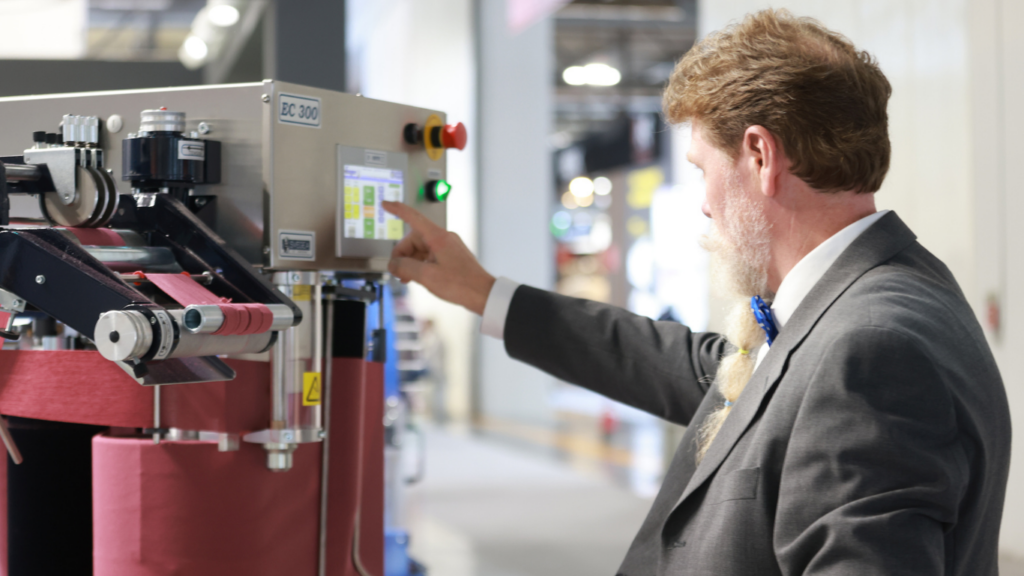
At Svegea of Sweden, flexibility isn’t just a feature—it’s our foundation. Our automated textile production solutions, including Automatic Collarette Cutters, Slitting Machines, and Band Cutting Machines, are engineered for speed, precision, and adaptability.
Here’s how Svegea supports the shift to on-demand production:
- Quick setup times: Ideal for switching between small and large batch runs
- Consistent precision: Every piece meets exact specifications, whether it’s 100 or 10,000 units
- Material versatility: Handles everything from lightweight knits to heavy-duty fabrics
- Just-in-time readiness: Designed for manufacturers who produce exactly what’s needed—no excess, no waste
By enabling manufacturers to meet the demands of today’s fast-paced, customized market, Svegea’s textile solution makes mass customization not only possible but profitable.
📩 Ready to future-proof your factory?
Contact Håkan Steene for a product demo at h.steene@svegea.se or visit https://www.svegea.se to explore our full range of textile solutions.
In today’s competitive garment and textile industry, efficiency isn’t just a technical benchmark—it’s a bottom-line imperative. Outdated machinery may seem serviceable, but behind the scenes, it’s quietly draining profits through excessive energy use, frequent breakdowns, and mounting maintenance costs.
As global demand intensifies and margins tighten, manufacturers are rethinking their approach. The shift toward cost-saving textile machinery isn’t just about modernization—it’s about survival. Smarter, more sustainable equipment is helping producers cut waste, optimize workflows, and unlock new levels of profitability
The True Cost of Outdated Equipment
While legacy machines may still function, they often demand more attention than they’re worth. Repairs become more frequent. Production slows. Fabric waste increases due to inconsistent cuts and poor precision. These issues don’t just affect workflow—they directly impact your bottom line.
Moreover, older systems typically lack automation features that modern factories depend on. As a result, labor costs rise, and throughput suffers. In an industry where speed and consistency are critical, falling behind can mean losing contracts or missing seasonal demand.
Upgrading to advanced textile machinery can dramatically shift your cost structure. Today’s machines are designed for high-speed, precision performance and built to last. The benefits are clear: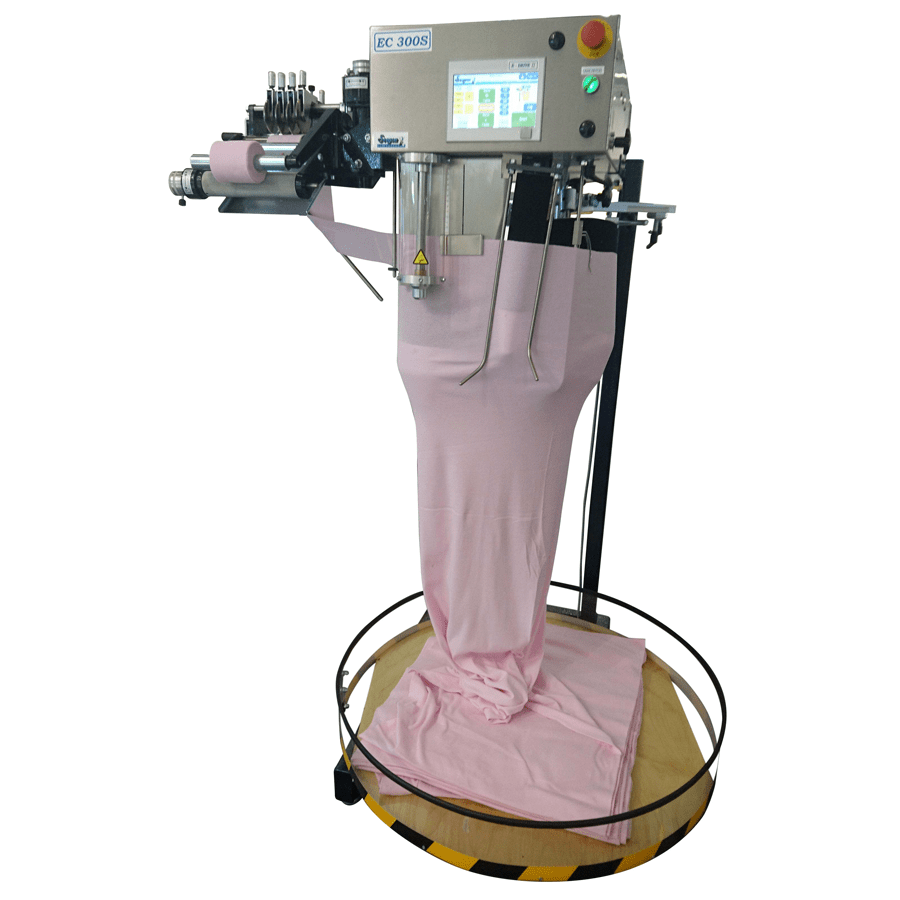
- Reduced Material Waste: Precision cutting minimizes fabric loss and maximizes yield.
- Lower Maintenance Costs: Durable engineering reduces downtime and service interventions.
- Energy Efficiency: Optimized motor systems consume less power, resulting in lower utility bills.
- Increased Output: Automation and speed enhancements enable the production of more garments per hour.
To illustrate how modern machinery delivers these benefits, let’s look at a real-world example.
One standout example is Svegea of Sweden’s EC300-S Collarette Cutter. Known for its high-speed precision and low maintenance requirements, it’s a favorite among garment manufacturers aiming to streamline production. The EC300-S reduces fabric waste, boosts output, and consumes less energy—making it a smart investment for both profitability and sustainability.
Real-World ROI: Efficiency That Pays Off
Consider a mid-sized garment factory that replaces its aging collarette cutter with a high-speed model. Within a year, production increases by 20%, fabric waste drops by 15%, and maintenance calls are reduced by nearly a third. These improvements don’t just save money—they create capacity for growth.
Even better, the return on investment often exceeds the initial purchase cost within the first 12 months. That’s not just smart—it’s strategic.
Sustainability Meets Profitability
Efficiency isn’t only about saving money. It’s also about reducing environmental impact. Machines like the EC300-S support eco-conscious manufacturing by using less energy and producing less waste. For brands focused on ESG goals, this alignment is essential.
Invest in What Moves You Forward
Standing still in textile manufacturing is a risk. Upgrading your machinery isn’t just a technical decision—it’s a business move that affects quality, speed, sustainability, and profitability. Whether you’re scaling up or streamlining operations, investing in cost-saving textile machinery can be the difference between surviving and thriving.
Ready to rethink your production strategy?
Explore how smarter textile machinery can reshape your efficiency, reduce waste, and support sustainable growth. Learn more about proven solutions like the EC300-S Collarette Cutter and discover what modern upgrades could mean for your bottom line. Contact Håkan Steene at h.steene@svegea.se to learn more, request product details, or schedule a hands-on demonstration tailored to your needs.


